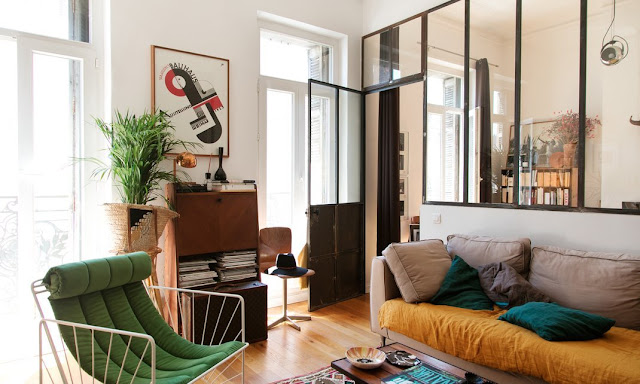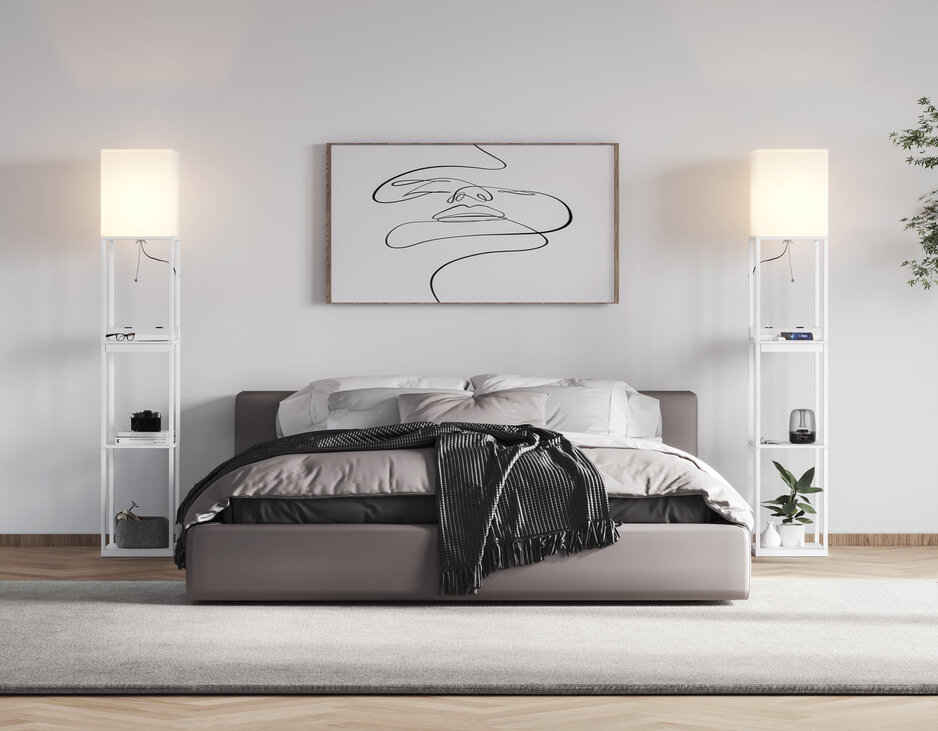The style of table lamps and floor lamps
Ceiling lights are the focal point of lighting in many rooms. But what if structural changes are not possible or not wanted here? Table lamps and their bigger siblings, the floor lamps, are not only indispensable for a balanced lighting concept, but they also make a design statement. We have collected a few special recommendations for you here.
Which role floor lamps and table lamps should play in lighting planning is less a question of "if" and more a question of "how" . These two types of luminaires are more or less mandatory in a good lighting concept. "Without table and floor lamps, I take the opportunity to work with different mounting heights." Because only light from the ceiling is not enough for a balanced and varied lighting concept.
Free-standing lights: All you need is a socket
Yet this is the day-to-day lighting routine in many rental apartments: If the use of space and furnishings change as frequently as the residents, then the central ceiling outlet is not good, but a safe solution; structural changes are rarely possible or, in the worst case, have to be dismantled when moving out. This is where a table and floor lamps score with their flexibility: Usually, a socket nearby is sufficient, with battery lamps this is not even needed. Not only in terms of location but also terms of their light, table lamps and floor lamps are true light artists.
Desk lights: designed functionality
The desk at home is one of the classic locations for table lamps. This is where their strength comes into play, bringing light to a surface in a targeted and short way. The selection is correspondingly diverse, from the more functional brightness supplier to the elaborately designed eye-catcher. Ideally, your desk lamp is both.
Decorative light objects for the living room
In the living room, table lamps usually have a different function: they often serve as decorative light objects. They are not allowed to dazzle. Luminaires like the LED floor lamp by Sunmory, which emit their light in a diffuse, unshielded manner, are predestined for this.
The Musa by the Spanish manufacturer Vibia is more extravagant: a spherical diffuser made of aluminum is cleverly hidden behind hand-blown opal glass and is enclosed by the concave curves of the bowl. The asymmetrical arrangement not only ensures a particularly beautiful and atmospheric light distribution but also makes this fascinating and seemingly fragile light object appear much more lively.
Floor lamps can also contribute to the basic lighting
Free-standing luminaires can be used both for accent lighting in the living room and for basic lighting via indirect light - a typical area of application for uplights. The LED floor lamp from Sunmory is almost an all-rounder: the luminaire heads can be rotated, and the indirect uplight and direct downlight can be varied using gesture control. The lamp magnetic back part allows you to place the remote control on a metal surface such as the floor lamp post, so the remote control is not easy to lose and saves space, the iron lamp post protects the internal wires and light bulb, make the black-led floor lamp more durable. At 1.80 meters, the light source is high enough that for most people it is above eye level and therefore not dazzling, it can easily illuminate the living room, bedroom, workplace, and every corner.
Arc luminaires create islands of light
Whether over the wall or the ceiling: The soft, diffused light illuminates the room evenly and without extreme shadows. What indirect light cannot do well: create islands of light. Arc lamps are convincing here, standing lamps whose curved body allows the lamp to direct its light and cast it directly from above. This light is known as pendant lights, which are very popular for good reason. Arc lights are ideal for the dining table, but they can also create a campfire atmosphere on the living room table.




Comments
Post a Comment